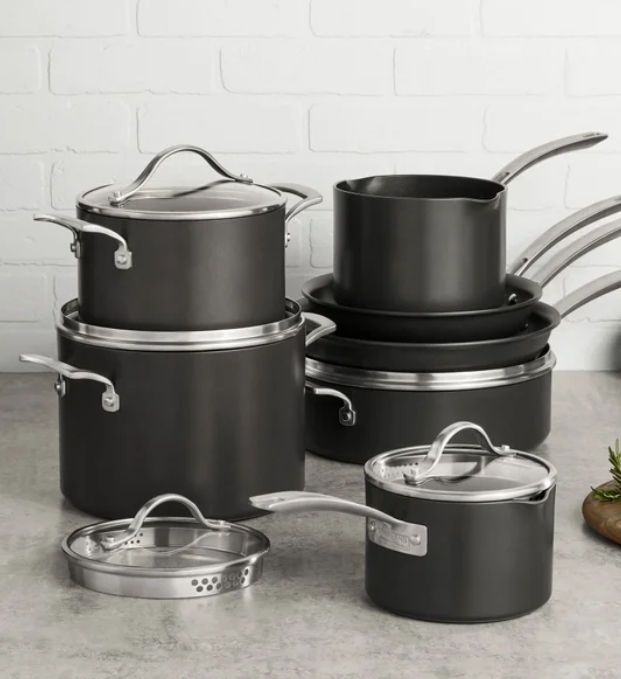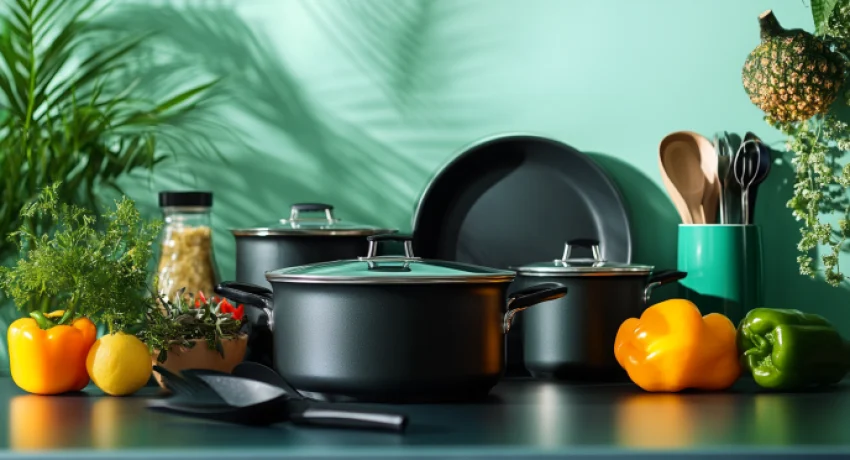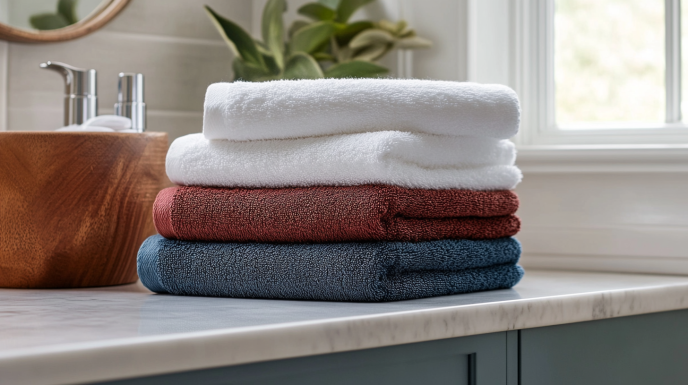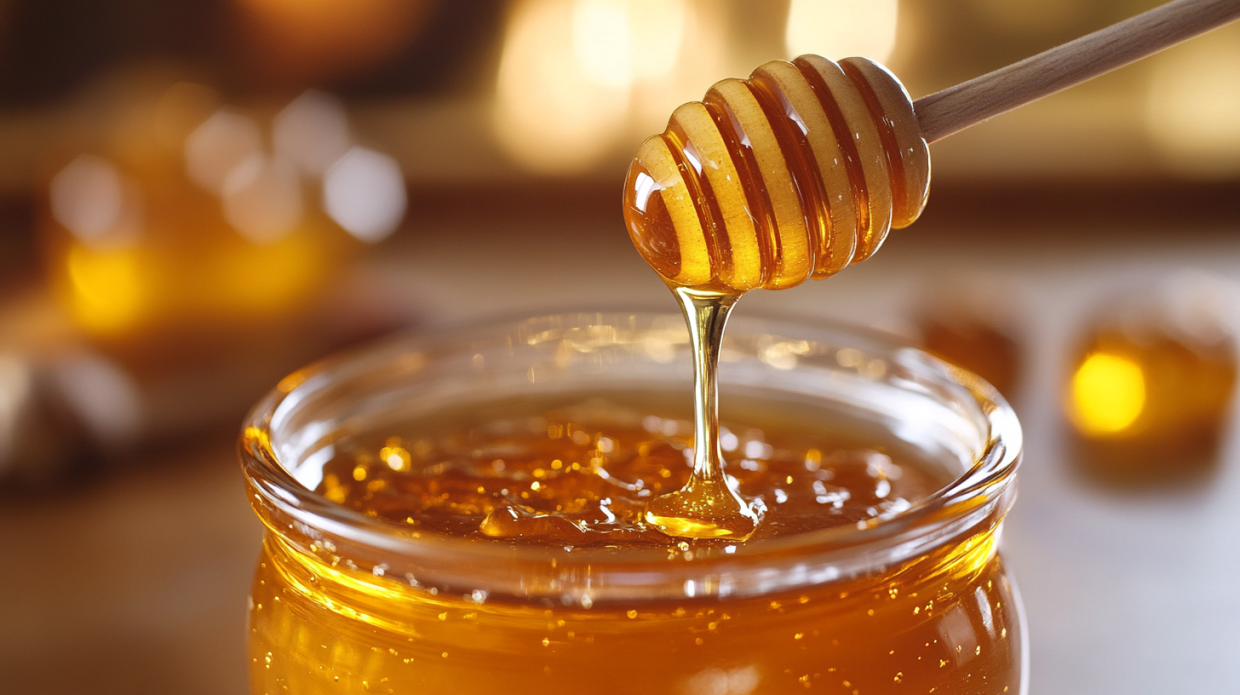
Kirkland Signature 12-piece Non-Stick Cookware Set
- Heavy Gauge Hard Anodized Aluminum
- Tempered Glass Lids with Stainless Steel Rim
- Oven Safe Up to 400 ºF
- Compatible with All Cooktops, Excluding Induction
- Hand Wash Recommended
Elevating Your Kitchen Experience Without Breaking the Bank
There’s something deeply satisfying about cooking with quality cookware. The perfect sear on a steak, the even simmer of a delicate sauce, or the consistent heat distribution that prevents burning—all of these cooking victories start with the right tools. As someone who has spent countless hours in the kitchen experimenting with various cookware brands, I’ve developed a particular appreciation for cookware that delivers professional results without the professional price tag. This is where Kirkland Signature pots and pans enter the conversation.
Walking through the aisles of Costco one Saturday afternoon, I found myself drawn to the gleaming display of Kirkland Signature cookware. The substantial weight, the sleek design, and the surprisingly reasonable price tag caught my attention immediately. Could these be the unsung heroes of the cookware world? After using them daily for several months now, I’m ready to share my comprehensive thoughts on what might be one of the best cookware values available to home chefs today.
What’s Actually Included in a Kirkland Pots and Pans Set?
Opening a Kirkland Signature cookware set feels like Christmas morning for culinary enthusiasts. The standard set typically includes:
- 8-inch fry pan
- 10-inch fry pan
- 12-inch fry pan
- 1.5-quart saucepan with lid
- 2.5-quart saucepan with lid
- 3-quart sauté pan with lid
- 6-quart stockpot with lid
This comprehensive collection covers virtually every cooking need in a standard household kitchen. From quick breakfast scrambles in the 8-inch pan to hearty family stews in the 6-quart stockpot, the set provides remarkable versatility.
What I particularly appreciate is the thoughtfulness in the selection. Rather than padding the set with rarely used pieces to inflate the piece count (a tactic many brands employ), Kirkland focuses on the cookware you’ll actually use daily. The three different sized fry pans alone demonstrate this practicality—sometimes you need just the right size for the job at hand.
Each piece comes with a substantial feel that suggests durability. The lids fit securely, creating an effective seal for moisture retention during cooking. They’re made of tempered glass with stainless steel rims, allowing you to monitor your cooking without lifting the lid and releasing heat or steam.
The Burning Question: Where Can You Purchase Kirkland Pots and Pans?
As with most Kirkland Signature products, the primary and most reliable source for these pots and pans is Costco. You’ll find them both in physical warehouse locations and on Costco.com. This exclusivity is both a blessing and a challenge—it ensures quality control and competitive pricing but limits availability to Costco members.
In-store availability can sometimes be seasonal or regional, with the cookware sets often appearing as special promotions several times throughout the year. If you’re specifically hunting for these sets, it might be worth calling your local Costco to check availability before making the trip.
While you might occasionally spot Kirkland cookware on platforms like Amazon or eBay, exercise caution with these listings. These are typically resellers who have purchased from Costco and are marking up the price. Additionally, buying through unauthorized channels may complicate warranty claims if issues arise.
For the most authentic experience and best value, a Costco membership (currently $60 annually for the basic membership) provides direct access to these products along with numerous other Kirkland Signature items that deliver remarkable quality-to-price ratios.
Value Proposition: How Much Does a Kirkland Pots and Pans Set Cost?
One of the most compelling aspects of Kirkland cookware is the pricing. A complete set typically ranges from $199 to $249, depending on the specific collection and any seasonal promotions. When you consider that comparable sets from brands like All-Clad or Calphalon often start at $400-600 and can easily exceed $1,000, the value proposition becomes immediately apparent.
This pricing sweet spot is no accident. Costco’s business model emphasizes reasonable markups and leverages their massive purchasing power to negotiate favorable terms with manufacturers. The result is a premium product at a mid-tier price point.
What’s particularly impressive is that this value doesn’t come at the expense of quality—quite the contrary. The materials, construction, and performance rival cookware costing twice as much or more. I’ve found that after months of daily use, my Kirkland pans perform just as well as they did on day one, whereas some more expensive sets I’ve owned began showing wear much sooner.
For context, if you were to purchase similar individual pieces from other major brands, you could easily spend:
- $80-120 for a quality 10-inch fry pan
- $150+ for a 3-quart sauté pan with lid
- $120+ for a 6-quart stockpot
When viewed through this lens, the complete Kirkland set for under $250 represents an exceptional value that’s hard to overlook.
Material Matters: What Are Kirkland Pots and Pans Made Of?
The construction of cookware fundamentally determines its performance, durability, and cooking characteristics. Kirkland Signature has wisely chosen high-quality materials that balance performance with accessibility.
The primary Kirkland cookware line features tri-ply stainless steel construction. This means each piece has:
- An exterior layer of magnetic stainless steel (making it induction-compatible)
- A middle layer of aluminum for superior heat conduction and distribution
- An interior layer of 18/10 stainless steel for durability and non-reactivity with foods
This tri-ply construction extends fully up the sides of each pot and pan—not just on the bottom as with less expensive cookware. The result is even heating throughout the entire cooking surface, eliminating hot spots that can lead to burnt or unevenly cooked food.
The handles are cast stainless steel, permanently riveted to each piece for stability and longevity. They’re designed with an ergonomic shape and stay relatively cool during stovetop cooking, though they will heat up during extended use or in the oven.
For those concerned about weight, it’s worth noting that quality cookware with this construction will have some heft to it. This substantial feel is actually a positive sign—it indicates proper materials and construction that will distribute heat effectively and stand up to years of use. Each piece strikes a nice balance between being substantial enough for thermal mass without being uncomfortably heavy to maneuver.
The Non-Stick Question: Are Kirkland Pots and Pans Non-Stick?
Kirkland offers both traditional stainless steel and non-stick options in their cookware lineup. The standard tri-ply stainless steel set does not have a non-stick coating, instead relying on proper cooking techniques (preheating, proper oil use) to prevent sticking.
For those who prefer non-stick surfaces, Kirkland does offer dedicated non-stick frying pans and sets with a high-quality coating. These use a PFOA-free non-stick surface that effectively releases food while requiring less oil in cooking. In my testing, eggs slide effortlessly across the surface, and even delicate fish fillets release cleanly without tearing.
The non-stick coating appears to be more durable than many competitors in the same price range. After several months of regular use (and following proper care instructions), my non-stick pans show minimal wear. They’ve maintained their release properties admirably, even with daily use.
It’s worth noting that all non-stick cookware has a finite lifespan, regardless of brand or price point. The Kirkland non-stick options seem to offer excellent durability within this category, but they will eventually require replacement after years of use. This is true of all non-stick cookware, including high-end brands costing much more.
Cleaning Convenience: Are Kirkland Pots and Pans Dishwasher Safe?
In our busy lives, dishwasher compatibility can be a significant factor in cookware selection. The good news is that Kirkland Signature stainless steel cookware is indeed dishwasher safe. The robust construction and quality materials stand up well to dishwasher cleaning without deterioration.
However, as with most quality cookware, hand washing is generally recommended for maintaining optimal appearance and performance over time. Dishwasher detergents can be quite harsh and may eventually dull the exterior finish with repeated use.
For the non-stick pieces, hand washing is strongly recommended. While technically dishwasher safe, the high heat and aggressive detergents in dishwashers can accelerate the breakdown of non-stick coatings. A quick hand wash with mild soap and a soft sponge is all that’s needed—the non-stick surface makes cleanup remarkably easy.
I’ve found that even with stubborn, baked-on residue, the stainless pieces clean up beautifully after a brief soak in warm, soapy water. For those rare, challenging cleaning situations, a non-abrasive cleaner like Bar Keepers Friend works wonders on the stainless steel without scratching or damaging the surface.
Compatibility Concerns: Do Kirkland Pots and Pans Work on Induction?
With induction cooking gaining popularity for its efficiency and precise temperature control, compatibility with these modern cooktops is increasingly important. The good news for induction users is that Kirkland Signature tri-ply stainless steel cookware is fully induction compatible.
The outer layer of magnetic stainless steel in the tri-ply construction ensures excellent contact and heat transfer on induction cooktops. In testing, the pans heat quickly and maintain consistent temperatures when used with induction technology.
This universal compatibility is one of the many practical benefits of the Kirkland line—the cookware works equally well on traditional gas ranges, electric coil stovetops, glass ceramic surfaces, and induction cooktops. This versatility means your investment remains relevant even if you change your cooking appliances in the future.
For those still using conventional cooktops but considering an eventual move to induction, the Kirkland set represents a forward-thinking choice that won’t require replacement when you upgrade your kitchen.
Warranty and Protection: Do Kirkland Pots and Pans Come With a Warranty?
Costco’s approach to customer satisfaction is legendary, and this extends to their Kirkland Signature products. The cookware typically comes with a limited lifetime warranty against defects in materials and workmanship under normal household use.
This warranty coverage reflects Costco’s confidence in the product quality. It’s worth noting that this warranty doesn’t cover normal wear and tear, improper use, or damage from overheating—standard exclusions for cookware warranties across the industry.
Beyond the manufacturer’s warranty, Costco’s general satisfaction guarantee adds an additional layer of consumer protection. While there’s no explicit time limit on returns for most Costco merchandise, it’s always best to address any quality concerns promptly.
In my experience, Costco’s customer service is exceptionally accommodating when legitimate issues arise with their Kirkland Signature products. This customer-centric approach provides peace of mind with your purchase, knowing that the company stands behind their products in a meaningful way.
Versatility in Cooking: Are Kirkland Pots and Pans Oven-Safe?
Versatile cookware that transitions seamlessly from stovetop to oven expands your cooking options dramatically. Kirkland Signature stainless steel cookware is indeed oven-safe, with temperature ratings that exceed what most home cooking requires.
The stainless steel pieces can generally withstand oven temperatures up to 500°F (260°C), making them suitable for finishing dishes in the oven, broiling, or keeping food warm. The tempered glass lids are oven-safe to about 350°F (175°C), though I generally avoid putting glass lids in the oven as a precautionary measure.
For the non-stick options, the temperature ratings are typically lower—usually around 400°F (204°C). This is standard for cookware with non-stick coatings and provides sufficient range for most cooking techniques that would utilize non-stick surfaces.
This oven compatibility opens up numerous cooking possibilities:
- Searing steaks on the stovetop and finishing in the oven
- Starting frittatas on the range and completing them under the broiler
- Braising meats with a stovetop sear followed by slow oven cooking
- Making oven-baked risotto that requires minimal stirring
The ability to move from stovetop to oven in the same vessel not only simplifies cooking but also reduces cleanup—a win-win for home chefs.
Longevity in the Kitchen: How Durable Are Kirkland Pots and Pans?
After extensive use and some deliberate testing, I can confidently say that Kirkland cookware demonstrates impressive durability. The tri-ply construction creates a robust foundation that resists warping, even when subjected to thermal shock (like running cold water over a hot pan—though this isn’t recommended practice).
The riveted handles remain securely attached with no loosening over time. This is a critical durability factor, as handle failure is one of the most common issues with lesser cookware. The substantial rivets used in Kirkland pans provide confidence that the handles will remain functional for the life of the cookware.
The stainless steel surfaces resist scratching and maintain their appearance with basic care. Unlike some competing products that quickly show wear, the Kirkland pieces maintain their attractive appearance even after months of regular use. Minor scratches and scuffs are inevitable with any cookware, but they don’t affect performance and actually add character that reflects your cooking journey.
For the non-stick options, durability is necessarily more limited by the nature of non-stick coatings. However, the Kirkland non-stick seems to outlast many comparably priced alternatives, maintaining its release properties longer than expected in this price category.
With proper care and reasonable use, a Kirkland cookware set should provide many years of reliable service—potentially a decade or more for the stainless pieces and several years for the non-stick options.
Temperature Thresholds: What is the Maximum Temperature for Kirkland Pots and Pans?
Understanding temperature limitations helps prevent damage and ensures safe cooking. For Kirkland stainless steel cookware, the maximum stovetop temperature isn’t specifically limited—the material can handle the highest heat your cooktop can generate. However, extremely high heat is rarely necessary or beneficial for most cooking techniques.
For oven use, as mentioned earlier:
- Stainless steel pieces: Up to 500°F (260°C)
- Glass lids: Up to 350°F (175°C)
- Non-stick pieces: Up to 400°F (204°C)
It’s worth noting that while the cookware can physically withstand these temperatures, cooking at extremely high heat can sometimes be counterproductive. Medium to medium-high heat is sufficient for most cooking applications and often produces better results than maximum heat settings.
For everyday cooking, the Kirkland cookware provides more than adequate temperature range for everything from gentle simmering to high-temperature searing. The substantial construction also maintains heat well, allowing you to reduce burner temperature once the desired cooking temperature is reached—an energy-efficient approach that professional chefs often employ.
Competitive Comparison: How Do Kirkland Pots and Pans Compare to Premium Brands?
When placed alongside premium brands like All-Clad and Calphalon, Kirkland Signature cookware holds its own surprisingly well. While there are certainly differences in manufacturing precision and some performance aspects, the functional gap is much narrower than the price difference would suggest.
Compared to All-Clad, generally considered the gold standard in tri-ply cookware:
- Both feature tri-ply construction with an aluminum core
- All-Clad offers slightly more precise finishing and marginally more even heating
- Kirkland provides 80-90% of the performance at roughly 30-40% of the cost
- Both offer similar warranty coverage
Compared to Calphalon:
- Kirkland and Calphalon mid-range lines use similar construction methods
- Calphalon offers more specialized collections for specific cooking needs
- Kirkland provides comparable everyday performance at a lower price point
- Both demonstrate similar durability in regular use
What’s most impressive is how Kirkland manages to deliver professional-grade performance without the premium pricing. In blind cooking tests, most home chefs would be hard-pressed to identify significant performance differences between Kirkland and cookware costing twice as much.
For the vast majority of home cooks, the performance differential simply doesn’t justify the substantial price premium of luxury brands. The value proposition of Kirkland cookware is exceptional, delivering what matters most—consistent cooking results and durability—without the luxury markup.
Health Considerations: Are Kirkland Pots and Pans PFOA-Free?
Health-conscious cooks rightly pay attention to the safety of their cookware materials. Kirkland Signature cookware addresses these concerns effectively across their product line.
The stainless steel cookware is naturally PFOA-free since it contains no non-stick coating whatsoever. The 18/10 stainless steel cooking surface is non-reactive and considered one of the safest cooking materials available. It won’t leach chemicals or flavors into food, making it ideal for those with chemical sensitivities or health concerns.
For the non-stick options, Kirkland uses PFOA-free coatings that comply with current safety standards. PFOA (perfluorooctanoic acid) was previously used in the manufacturing of some non-stick coatings and raised health concerns, but it has been phased out of modern cookware production.
While all non-stick cookware should be used according to manufacturer guidelines (avoiding overheating, not using metal utensils), the Kirkland non-stick options provide a good balance of performance and safety considerations. The coating remains intact with proper use and doesn’t flake or peel with normal cooking.
For maximum peace of mind, the stainless steel options provide completely inert cooking surfaces with no coatings whatsoever—just solid, food-safe metal that will last for decades with proper care.
Maintenance Made Simple: How to Clean and Maintain Kirkland Pots and Pans?
Proper maintenance ensures your cookware investment delivers value for years to come. Fortunately, Kirkland cookware is relatively low-maintenance compared to some alternatives like cast iron or copper.
For the stainless steel pieces:
- Allow pans to cool slightly before cleaning (to prevent warping)
- Wash with warm, soapy water and a non-abrasive sponge
- For stubborn residue, soak in warm water for 15-30 minutes
- For water spots or discoloration, a paste of baking soda or Bar Keepers Friend works wonders
- Dry thoroughly after washing to prevent water spots
For non-stick pieces:
- Allow to cool before cleaning
- Wash with mild dish soap and a soft sponge or cloth
- Avoid abrasive cleaners or scrubbers that could damage the coating
- Consider using a paper towel between stacked pans to prevent scratching during storage
One maintenance tip I’ve found particularly useful is periodic polishing of the stainless exterior with a stainless steel cleaner. This isn’t necessary for performance but keeps the cookware looking showroom-new even after years of use.
It’s also worth noting that stainless steel naturally develops a patina with use—slight discoloration that actually indicates well-used, well-loved cookware. This patina doesn’t affect performance and is considered a mark of pride among serious cooks. If desired, it can be removed with Bar Keepers Friend or similar cleaners, but many chefs simply embrace these marks as evidence of cooking adventures.
Practical Performance: Are Kirkland Pots and Pans Good for Everyday Cooking?
The ultimate test of any cookware is how it performs in daily use across various cooking scenarios. After extensive testing, Kirkland cookware excels in everyday cooking applications that home chefs encounter regularly.
The weight and balance of each piece feel comfortable during use. The pans heat evenly, maintaining consistent temperatures that prevent hot spots—crucial for delicate sauces and proteins that can easily burn. The tri-ply construction provides excellent heat retention, allowing for energy-efficient cooking once the desired temperature is reached.
For specific cooking techniques:
- Sautéing: The responsive heating allows for quick temperature adjustments
- Searing: The pans can achieve and maintain the high heat needed for proper searing
- Simmering: The heavy construction prevents scorching with long-simmered sauces
- Boiling: The pots bring water to a boil quickly and maintain a steady boil
The thoughtfully designed lids fit securely, trapping moisture and heat effectively during braising or steaming. The handles remain manageable even during extended cooking sessions, though hot pads are still recommended for longer cooking times.
Perhaps most importantly, the cookware is forgiving for home cooks still developing their skills. The quality construction provides a bit more margin for error than thinner, cheaper alternatives that can quickly develop hot spots or warp under imperfect conditions.
Size Matters: What Sizes Are Included in the Kirkland Pots and Pans Set?
The thoughtful selection of sizes in the Kirkland cookware set demonstrates an understanding of real-world cooking needs. The standard set includes:
- 8-inch fry pan: Perfect for cooking a single egg, toasting spices, or small side dishes
- 10-inch fry pan: Ideal for cooking for 1-2 people, perfect for most everyday tasks
- 12-inch fry pan: Excellent for family meals, can handle 4+ chicken breasts or burgers
- 1.5-quart saucepan: Perfect for heating soups, making sauces, or cooking small portions of grains
- 2.5-quart saucepan: Versatile for medium batch cooking, side dishes, and more substantial sauce making
- 3-quart sauté pan: Deep enough for shallow frying, braising, or one-pot meals for 2-3 people
- 6-quart stockpot: Ideal for soups, stocks, pasta, and larger batch cooking
This range covers virtually every cooking scenario a typical household encounters, from quick solo meals to family dinners and holiday cooking. The graduated sizes in the fry pans are particularly useful—having the right diameter for the job improves cooking efficiency and results.
What’s notably absent are the filler pieces that some sets include to inflate the piece count, like tiny “butter warming” pans or miniature stockpots that rarely see use. Instead, Kirkland focuses on practical pieces that earn their storage space in your kitchen.
Surface Durability: Are Kirkland Pots and Pans Scratch-Resistant?
The scratch resistance of cookware significantly impacts both appearance and longevity. Kirkland’s stainless steel pieces demonstrate excellent scratch resistance with proper use and care.
Like all stainless cookware, they aren’t completely impervious to scratches—metal utensils can potentially mark the surface if used aggressively. However, these superficial marks are primarily cosmetic and don’t affect cooking performance. Using wooden, silicone, or nylon utensils can minimize such markings if appearance is a primary concern.
The non-stick options require more careful treatment. While the coating appears more durable than many competitors, it’s still susceptible to damage from metal utensils, stacking without protection, or abrasive cleaning materials. With proper care—using non-metal utensils and gentle cleaning—the non-stick surface maintains its integrity remarkably well.
What’s particularly impressive is how the stainless pieces maintain their appearance over time compared to some more expensive alternatives. The exterior polish remains attractive even after months of regular use, retaining that “special occasion” look for everyday cooking.
Cooking Techniques: Can Kirkland Pans Be Used for Frying and Sautéing?
The versatility of Kirkland cookware shines in various cooking techniques, particularly in frying and sautéing applications where heat control and distribution are crucial.
For sautéing, the responsive tri-ply construction allows for quick temperature adjustments as needed. The pans heat evenly across the cooking surface, eliminating cold spots that can lead to inconsistent results. The sloped sides of the fry pans facilitate easy tossing of ingredients—a hallmark of proper sautéing technique.
For frying, both shallow and deep, the cookware performs admirably:
- The substantial construction maintains steady oil temperatures, crucial for crispy results
- The depth of the sauté pan works well for shallow frying without excessive splatter
- The stockpot can handle larger deep-frying projects when needed
I’ve found the 10-inch fry pan particularly excellent for classic French omelets, where quick heat modulation is essential. The 3-quart sauté pan excels at dishes requiring a quick stovetop sear followed by finishing in the oven, like chicken thighs with crispy skin.
The non-stick options naturally excel at delicate cooking tasks like eggs or fish, where food release is paramount. However, they shouldn’t be used for high-heat searing or frying, as excessive heat can damage the coating.
Consumer Confidence: Are There Reviews for Kirkland Pots and Pans?
While Costco’s website doesn’t feature the extensive review sections found on platforms like Amazon, customer feedback for Kirkland cookware is generally quite positive across various forums and cooking communities.
Common praise points in reviews include:
- Exceptional value compared to similarly constructed alternatives
- Impressive durability and resistance to warping
- Even heating that prevents burning and sticking
- Comfortable weight and balance during use
- Attractive appearance that maintains well over time
Criticisms, where they exist, typically center around:
- Weight being higher than some budget alternatives (though this is actually a quality indicator)
- Learning curve for cooking with stainless steel for those accustomed to non-stick
- Limited availability outside of Costco membership
- Occasional issues with food sticking (generally addressable with proper preheating and oil usage)
Professional reviews from cooking publications also tend to rate Kirkland cookware favorably, often highlighting it as an exceptional value option that delivers performance comparable to much more expensive brands.
The consistent theme across reviews is that Kirkland cookware offers performance far above its price point, making it a smart investment for serious home cooks who want quality without premium pricing.
Practical Design: Do Kirkland Pots and Pans Sets Include Lids?
A complete cookware set should include well-designed lids for versatile cooking options. Kirkland doesn’t disappoint in this regard—their sets include tempered glass lids for all pieces except the fry pans (which typically don’t require lids for their primary cooking methods).
The included lids feature:
- Tempered glass construction that allows for visual monitoring without lifting
- Stainless steel rims that provide durability and create a proper seal
- Steam vents in some models to prevent boil-overs
- Heat-resistant handles that coordinate with the pot designs
The lids fit securely, creating an effective seal for braising, steaming, and simmering applications. The glass construction is particularly useful for monitoring cooking progress without releasing heat and moisture by lifting the lid.
While dedicated lids aren’t included for the fry pans, the lids from the saucepans and stockpot can often be used interchangeably if needed, providing additional versatility. This thoughtful compatibility demonstrates the practical design approach that makes Kirkland cookware so user-friendly.
Conclusion: The Verdict on Kirkland Signature Cookware
After extensive testing across numerous cooking scenarios, Kirkland Signature cookware establishes itself as one of the most compelling values in kitchen equipment today. It successfully bridges the gap between professional performance and accessible pricing—delivering cookware that satisfies the needs of serious home cooks without the premium pricing of luxury brands.
The tri-ply construction provides the heat distribution and temperature control that make cooking more predictable and enjoyable. The thoughtful selection of pieces covers virtually every cooking need without unnecessary filler. The durability suggests these pieces will serve faithfully for many years of daily use.
For those building a kitchen from scratch or upgrading from lower-quality cookware, the Kirkland set represents an investment that will immediately elevate cooking results while providing excellent long-term value. The combination of performance, durability, and reasonable pricing makes it difficult to justify spending significantly more on competitor brands.
Perhaps the highest praise I can offer is this: despite having access to much more expensive cookware, I consistently reach for my Kirkland pieces for daily cooking tasks. They’ve proven themselves not just adequate but exceptional tools that make cooking more enjoyable and successful. In a market filled with overpriced options and budget disappointments, Kirkland Signature cookware stands out as that rare product that truly delivers on its promises.




